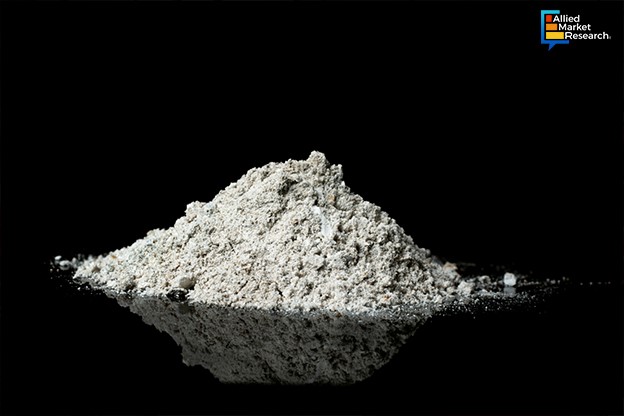How Can Investing in Fly Ash Prove to Be a Good Strategy for Construction and Real Estate Businesses?

14 Feb
2024
Highlights:
- Introduction
- Application of coal ash in concrete and cement manufacturing
- Advantages of coal ash bricks over conventional bricks
- Performance of the fly ash industry in the Asia-Pacific region
- Initiatives from governments and private companies in the industry
Fly ash, also sometimes called coal ash, is a by-product of coal combustion processes; the fine grey colored powder, with spherical glassy particles, is rich in pozzolanic materials. Due to this composition, fly or coal ash reacts easily with lime and produces cementitious materials. As a result of this chemical property, coal ash is widely used in manufacturing of various products like concrete, bricks, cement, mining chemicals, etc.
Using fly ash in concrete: A shift towards a sustainable cement manufacturing industry
Being an amorphous aluminum-silicate powder, coal ash is one of the best pozzolanic materials. As a result, a new type of cement called Portland Pozzolana Cement (PPC) is being increasingly used, wherein coal ash is mixed with regular Portland cement. Traditionally, Portland cement has been an essential raw material in concrete production. However, studies have shown that mixing Portland Pozzolana Cement can improve the quality of the concrete drastically and also reduce the carbon footprint of the industry. Hence, most manufacturing companies have increased the proportion of Portland Pozzolana Cement from 12-15% to 30-35% in concrete production.
During coal combustion, soot and coal ash are among the most harmful particles that are released which pollute the air and contribute to global warming. Since coal ash has economic value, thermal power plants have started installing electrostatic precipitators in their plants. The gases released from coal combustion before getting mixed up in the atmosphere pass through this equipment. Electrostatic precipitator, by acting as a filter, helps in collecting coal ash. Thermal power plants, then sell off this coal ash to cement manufacturing companies, thus opening a new source of income. Collection of coal ash and its separation from gases significantly reduces the amount of air pollution. Thus, use of fly ash offers economic as well as environmental benefits.
Moreover, the quality of concrete manufactured using Portland Pozzolana Cement is much better. The concrete containing Portland Pozzolana Cement is much more resistant to cold weather and doesn’t shrink easily. Also, the density of this concrete is much higher which helps in building smooth surfaces with sharper details. Mixing Portland Pozzolana Cement with conventional concrete reduces the need for a higher water-cement ratio. As a result, the workability offered by this concrete is much better. This effectively solves the issues related to permeability, cracking, bleeding, etc. Due to all these advantages, the cement and concrete segment of the fly ash industry is anticipated to rise at a CAGR of 6.6% during the 2023-2032 period.
How is the use of fly ash bricks transforming the construction and real estate industry?
In the past few years, coal ash bricks have been widely used in the construction of residential and commercial buildings all around the world. Even public infrastructure works such as roads, pavements, dams, etc., are being built using coal ash bricks. The bricks and blocks segment of the industry, as a result, has witnessed huge growth; the segment is set to rise at a CAGR of 6.3% during the 2023-2032 period. The biggest reason behind the rise in demand for these bricks is their strength, which is much higher than conventional bricks. At the same time, these bricks are much lighter in weight and hence are suitable for constructing high-rise, multi-floored buildings.
Furthermore, coal ash bricks have proven to be much better at absorbing heat, thereby keeping the interiors cooler even in harshest summers. Additionally, since these bricks are less porous, less water is required for construction; even the mortar required for construction is much less. This brings down the cost of construction drastically. Due to these factors, these bricks have witnessed huge rise in popularity especially in tropical countries.
How has the fly ash industry fared in the Asia-Pacific region?
As said earlier, coal ash bricks have been quite popular in construction of buildings in tropical countries. As a result, the coal ash industry, on the whole, is anticipated to flourish immensely in these countries, especially in the Asia-Pacific region. The rapid pace of urbanization and huge investments by governments in infrastructure development has helped open up new opportunities in the region. The coal ash domain in India, for instance, is projected to rise at a CAGR of 7.3% by 2032 owing to these reasons. Even the China coal ash industry is expected to grow with a CAGR of 6.8% in the coming period.
Role of private players and the public sector in redefining the industry
The rising expanse of the coal ash sector is the result of joint efforts of the governments across the world and major private sector companies. Both these entities have launched initiatives, products, and have even entered into alliances to effectively establish their dominance in the industry.
For instance, in August 2020, National Thermal Power Corporation, India’s largest power generator, announced that it was formulating coal ash management policies for better use of this by-product such as in development of roads, cement manufacturing, etc. This announcement gave out a strong signal to private companies that coal ash management was to be made an essential part of coal combustion processes.
Similarly, Vedanta Limited, a leading aluminum producer in India, announced a local coal-ash brick manufacturing scheme in Lanjigarh district of Odisha, a state in India. The company released a statement saying that the initiative will help the company to fulfil the ever-increasing demand for coal-ash bricks, thereby helping it to establish its dominance in the industry.
To summarize, the fly ash industry is set to experience a major boost in the coming period owing to huge demand for coal ash concrete and coal ash bricks from the construction and real estate sector. With governments and private companies offering proactive support, the industry is sure to grow in the near future.
To gain a better understanding of the growth drivers and investment opportunities in the industry, talk to our experts today!

Rosy Behera
Author's Bio- Rosy Behera holds a bachelor’s degree in Electrical and Electronics Engineering and now she is a content writer by profession. She loves to portray her thoughts and ideas with a nice command of words. Grabbing an audience with her creative write-ups is one of her biggest assets so far. Apart from writing, she is a certified “Odisi” dancer and has done Gardharva in Drawing, Painting, and Arts. She always explores new things through travel and is a big foodie.
Avenue: Entire Library membership of Allied Market Research Reports at your disposal
- Avenue is an innovative subscription-based online report database.
- Avail an online access to the entire library of syndicated reports on more than 2,000 niche industries and company profiles on more than 12,000 firms across 11 domains.
- A cost-effective model tailored for entrepreneurs, investors, and students & researchers at universities.
- Request customizations, suggest new reports, and avail analyst support as per your requirements.
- Get an access to the library of reports at any time from any device and anywhere.
Related Post
-
How are Submarine Cables Transforming Global Connectivity with Enhanced User Experience?
-
Endoscopy Procedures: Transformations in Techniques and Applications
-
AI-Powered Video Analytics: How the Product Actually Works for enterprises
-
Painting Robots: Transforming Precision Coating and Creative Applications
-
Innovations in Pharmacovigilance Systems Advancing Patient Safety
-
Understanding Edge Security: Keeping Data Safe Near the Source
-
Exploring the Use and Advancements of 3D Laser Scanners in Professional Applications
-
Reinforcing Industrial Controls with Smarter Tools and Training








